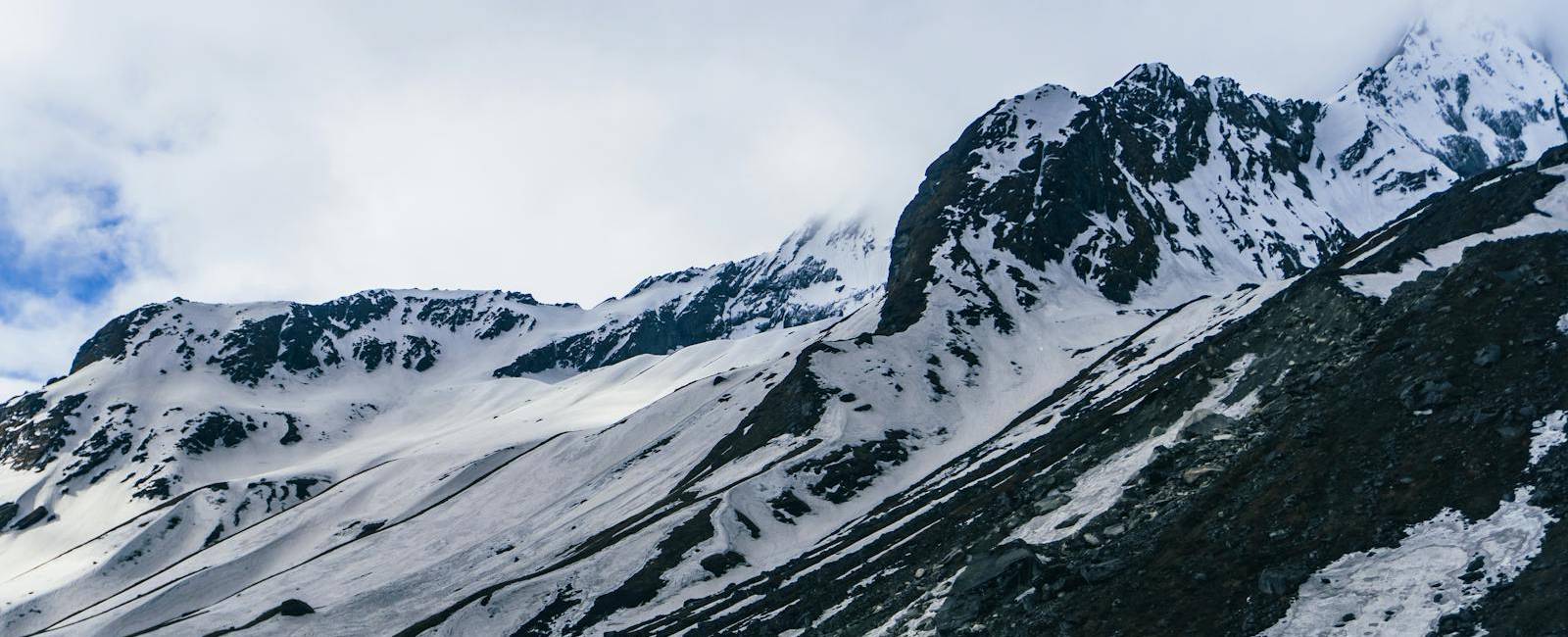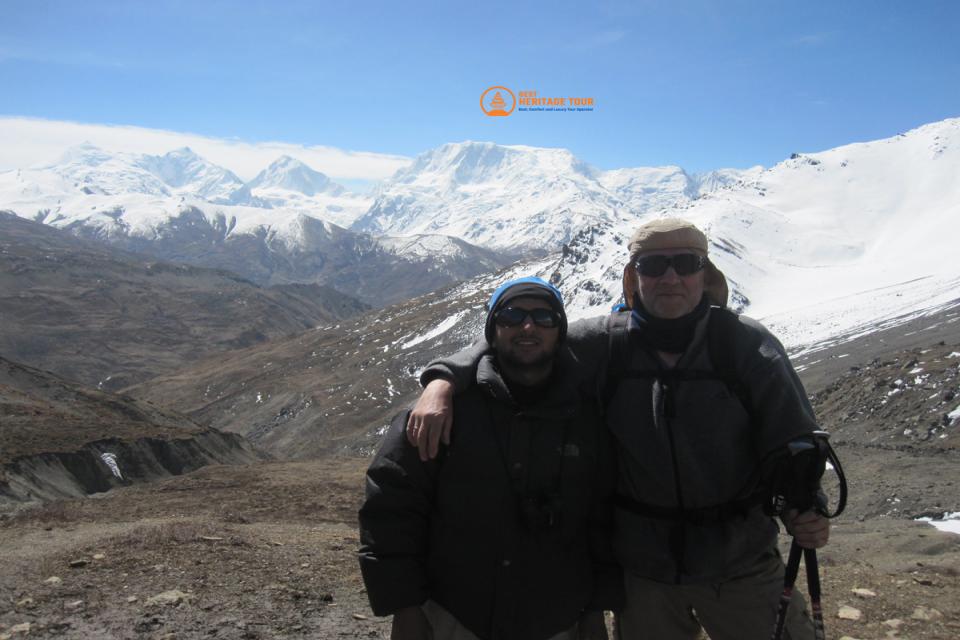Tucked away in the far reaches of Nepal’s northern Himalayas lies a place so remote, so untouched, and so breathtakingly wild that it often eludes the radar of even seasoned trekkers. That place is Nar Phu Valley - a secluded corner of the Annapurna region that offers a raw and rewarding experience far from the popular trekking trails.
So, where is Nar Phu Valley exactly? And why is it considered one of Nepal’s best-kept secrets?
In this guide, we’ll pinpoint its location, explain how to reach it, and uncover why this hidden valley is one of the most compelling destinations for those who crave isolation, culture, and natural beauty.
Geographic Location of Nar Phu Valley
The Nar Phu Valley is located in north-central Nepal, close to the Tibetan border, within the Manang District of Gandaki Province. It lies in the Trans-Himalayan region, which means it sits behind the main Himalayan range - resulting in a drier, colder, and more barren landscape similar to Tibet or Mustang.
Quick Location Facts:
-
Country: Nepal
-
Province: Gandaki
-
District: Manang
-
Altitude: 3,500 m (Nar) to over 5,300 m (Kang La Pass)
-
Coordinates (approx): 28.75°N, 84.25°E
Nar Phu Valley is surrounded by towering Himalayan peaks like Annapurna II, Pisang Peak, and Himlung Himal, offering surreal views that stretch across both Nepal and the Tibetan plateau.
Political and Administrative Placement
Nar Phu Valley falls inside the Annapurna Conservation Area (ACA) - Nepal’s largest and most popular protected area for trekking and biodiversity. However, unlike the freely accessible parts of the ACA, Nar Phu has been classified as a Restricted Area by the Government of Nepal due to its strategic location and cultural sensitivity.
As a result, special permits are required to trek here, and all visitors must be accompanied by a licensed guide and be part of a group of at least two people.
Nar and Phu - Two Distinct Villages in One Valley
Though often grouped together as the Nar Phu Valley, the villages of Nar and Phu are geographically separated, culturally nuanced, and physically distinct. Both lie in the high-altitude reaches of Nepal’s Manang district, but each offers a different window into life in the Himalayas.
After several days of trekking through barren ridgelines and alpine canyons, you first reach Phu Village, the more remote of the two.
Phu Village: A Wind-Scoured Citadel of Stone and Silence
Phu sits at an altitude of around 4,250 meters, nestled above a glacial riverbed surrounded by jagged cliffs and sweeping rock walls. The moment you approach Phu, it feels like stepping into a hidden fortress lost in time.
-
The village is perched atop a ridge, giving it a defensive, fortified appearance - a reflection of its strategic importance in ancient trade times.
-
Life here is deeply tied to the land and animals. Yaks are central to daily life, used for milk, cheese, wool, and transport.
-
You’ll see dry stone houses, narrow alleys, and open courtyards where locals gather for rituals and seasonal work.
-
The centerpiece is Tashi Lhakhang Monastery, said to be blessed by the 10th Karmapa, and considered one of the oldest active religious sites in the valley.
-
Phu’s remoteness means few outsiders make it here - those who do are treated to an authentic Tibetan-style village experience unlike anywhere else in Nepal.
The silence in Phu is almost sacred, broken only by the wind, the crackle of prayer flags, or the distant bell of a yak returning home.
Nar Village: Colorful, Compact, and Closer to the World
Situated at a slightly lower elevation of around 4,100 meters, Nar Village is typically visited after Phu, as trekkers descend toward the Kang La Pass and reconnect with the Annapurna region.
-
Nar is more compact than Phu, with homes tightly clustered together for warmth and community living.
-
The village is more open to visitors, with slightly better facilities (modest teahouses, more interaction) while still maintaining its traditional way of life.
-
Colorful prayer flags blanket rooftops, and several stupas and mani walls line the paths, echoing the villagers’ strong spiritual beliefs.
-
The people of Nar, like their Phu counterparts, are of Tibetan descent, but their dialect, customs, and festival practices show subtle differences.
-
Surrounded by agricultural terraces, Nar is more agrarian, with seasonal crops grown in warmer months and stored for the brutal winters.
Despite being relatively closer to the main trail and slightly more accessible, Nar has not compromised its heritage. It remains one of the most well-preserved Himalayan settlements in Nepal.
Two Villages, One Timeless Journey
The trek between Phu and Nar takes about 7 to 8 hours, crossing a high ridge with spectacular views of the surrounding peaks and canyons. Along the way, trekkers pass through yak pastures, crumbling stone chortens, and desolate stretches where the raw power of the Himalayas is on full display.
Though separated by distance and terrain, both Nar and Phu are cultural time capsules, where daily life continues as it has for centuries - simple, spiritual, and deeply connected to the mountains.
These villages don’t just show you where Nar Phu Valley is on a map - they show you what life looks like when untouched by modern timelines.
How to Get to Nar Phu Valley
Step 1: Arrive in Kathmandu
Your journey begins in Nepal’s capital, Kathmandu, home to Tribhuvan International Airport. From here, logistics are arranged for the long drive to the trekking starting point.
Step 2: Drive to Koto
You’ll take a scenic drive (1-2 days) through Besisahar, Jagat, and Dharapani, finally arriving at Koto, a small settlement near Chame in the Annapurna region. This is the official trailhead for the Nar Phu Valley Trek.
Step 3: Begin the Trek
From Koto, the trail leaves the main Annapurna route and enters a narrow gorge carved by the Nar Khola River. The first major stop is Meta, followed by Kyang, then Phu, and eventually Nar.
Step 4: Exit via Kang La Pass
After visiting Nar, trekkers cross the Kang La Pass (5,306m) to rejoin the Annapurna Circuit near Ngawal or Manang.
Nar Phu Valley on the Map
If you were to look at a detailed map of Nepal’s trekking routes, you’d find Nar Phu Valley nestled northeast of the Annapurna trail, about halfway between Manang and Upper Mustang. It’s closer to Tibet than to most other parts of Nepal.
Nearby Trekking Points:
-
Manang: ~2-3 days’ trek southwest
-
Thorong La Pass: ~3-4 days via Annapurna route
-
Tilicho Lake: ~5-6 days if diverted
-
Mustang: Bordering region to the west
It’s this unique positioning - in the shadow of both Annapurna and the Tibetan plateau that gives Nar Phu Valley its distinct character.
Terrain and Natural Environment
Geographically, Nar Phu Valley is situated in the Trans-Himalayan rain shadow, which gives it a dry, dramatic terrain unlike the green hills of lower Nepal. The landscape is dominated by:
-
Steep gorges and high cliffs
-
Glacial rivers and yak pastures
-
Alpine deserts and barren plateaus
-
Jagged peaks and wind-eroded rock formations
Expect stunning views of Himlung Himal (7,126m), Annapurna II, Gangapurna, and even glimpses of Tibetan territory on clear days.
Why Nar Phu Valley is Hard to Reach
Despite being inside the popular Annapurna region, Nar Phu Valley is still one of the least accessible areas in Nepal. Here’s why:
-
No direct road access beyond Koto
-
Remote and rugged terrain
-
Lack of infrastructure
-
Restricted area regulations
-
Unpredictable weather in high passes
But this inaccessibility is also what preserves its authenticity, culture, and serene environment.
Cultural and Spiritual Significance of the Location
The valley’s proximity to Tibet has shaped its identity. The people are ethnic Tibetan Buddhists, and their lives revolve around ancient monasteries, seasonal yak migrations, and spiritual rituals.
Nar Phu was once part of the ancient salt trade route connecting Nepal with Tibet. Many of the trails you walk today were used by traders and pilgrims centuries ago.
Even the monasteries are located in highly symbolic places - on cliffs, in caves, or at the confluence of rivers - believed to have special spiritual energy.
Conclusion: A Remote Valley Worth Finding
So, where is Nar Phu Valley? It’s hidden in the highlands of Manang, near the Tibetan border, behind Nepal’s central Himalayan range. It’s a place of rugged isolation, where geography, culture, and spirituality intertwine in ways that few destinations offer.
While it may be hard to reach, the reward is immense - stunning scenery, timeless villages, and an unforgettable journey through Nepal’s secret northern frontier.
Trek to Nar Phu Valley with Best Heritage Tour
Ready to explore one of the most untouched regions of the Himalayas?
Let Best Heritage Tour guide you through the Nar Phu Valley with expert care, cultural insight, and seamless logistics.
Book the Nar Phu Valley Short Trek
Call Us: +977-9851149197
Email: info@bestheritagetour.com / bestheritagetour@gmail.com
Website: www.bestheritagetour.com
Nar Phu isn’t just a place - it’s a revelation. Go where few have gone, and you’ll return with stories the world hasn’t heard.
Author: Best Heritage Tour
Date: 1st August, 2025


